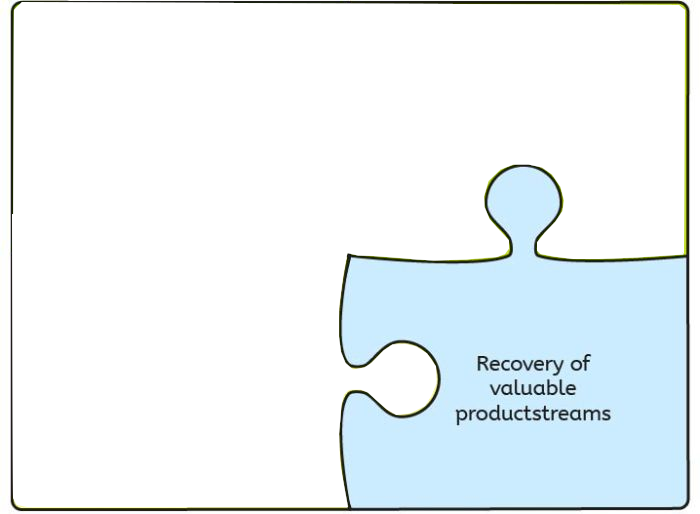Technology Benefits
A fluid-separator follows a specified and natural function inside a plant. Separators are essential to make processes work and they are often an under-estimated “watchguard” in a process plant environment. Therefore separators are often retro-fitted into production or industrial plants as difficulties in the process become a costly for unscheduled shutdowns or maintenance repair works. A separator can have up to maximum 4 differnent functions in one application.
1. Protect the Environment from hazardous liquids
In emission gas cleaning the liquid gas separators removes hazardous scrubber and/or cleaning liquids in order to avoid these droplets to be ejected into the plant environment. Such droplets can not only do harm to the nature, they can also be of corrosive nature and can burden a dangerous effect for health of living quarters in the plant area. Efficient separators remove such liquids prior to the gas-emission into the environment.
Examples:
- Removal of limestone slurry in an FGD absorber and prevention of ejection through the stack
- Removal of chromic acid droplets in a chromic acid plant
- Removal of scrubber liquids in odor or wet scrubbers

2. Smooth run of the process
Inefficient removal of liquid droplets from gas streams can disturb or trouble the process. In such cases the droplets cause either
- Increase in pressure loss though built-up of liquids (in filters) or scale/plug on surfaces in media contact with the gas
- worsen the heat transfer in heat-exchangers, leading to an increase use of thermal energy
- Built an ice-layer, blocking the free intake area and chocking the fans or turbines (in cold climates)
Examples:
- Gas Turbine fresh air intake filtration houses
- Multistage-evaporators getting plugged with highly viscous fluids
- Any filter in an HVAC plant getting wetted through rain or other free airborne liquids

3. Protect downstream components
Liquid/gas separators remove corrosive and hazardous droplets from a gas-stream, protecting downstream components.
Examples:
Protection of
- Compressors from erosion damage
- Gas- and steam-turbines from erosion damage
- Duct work from corrosion damage through salts or slurry overloads
- Heat-exchangers from scale

4. Recovery of valuable liquids
The removed liquid in a gas-stream can be a product or a by-product. Loss of such liquids cause an economical loss.
Examples:
- Recovery of liquid glycol in a cold-separator
- Recovery of limestone-slurry in an FGD absorber
- Recovery of spinning oil in a textile fiber production
- Recovery/retention of sugar molasses in a multi-stage evaporator
An efficient separation process of these droplets saves operating costs.
